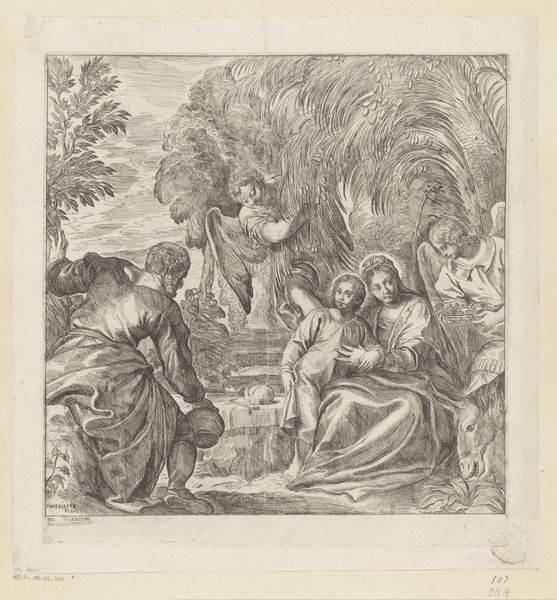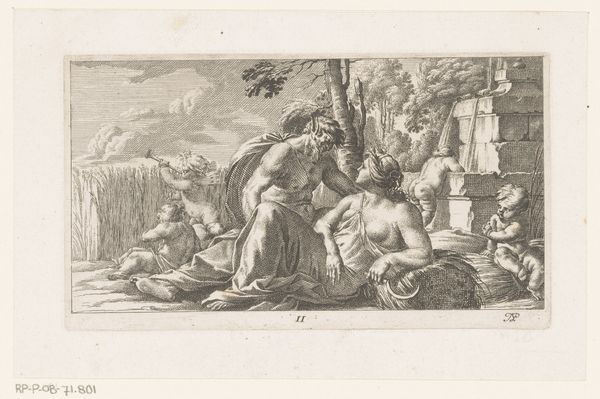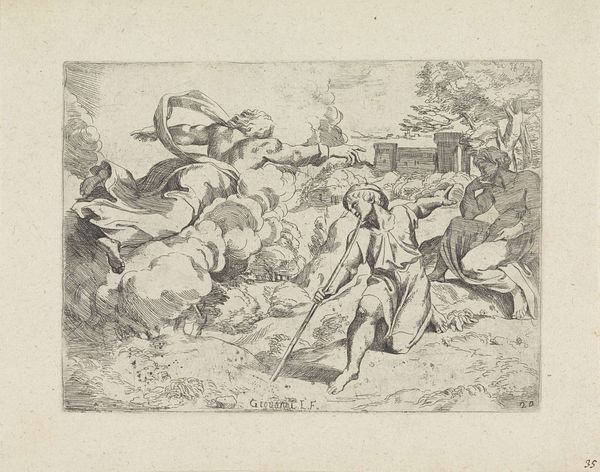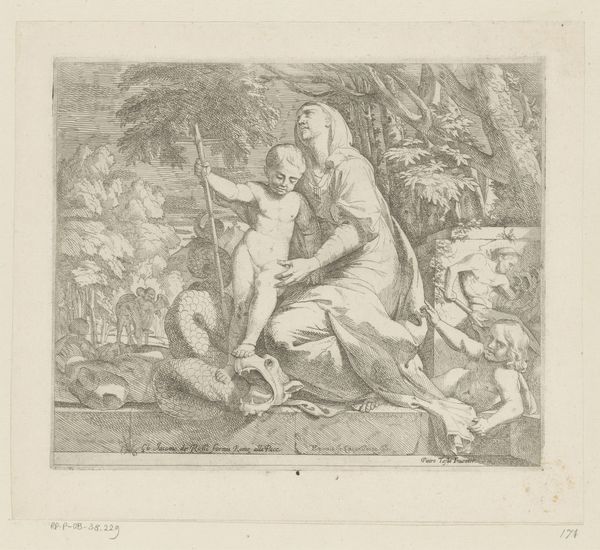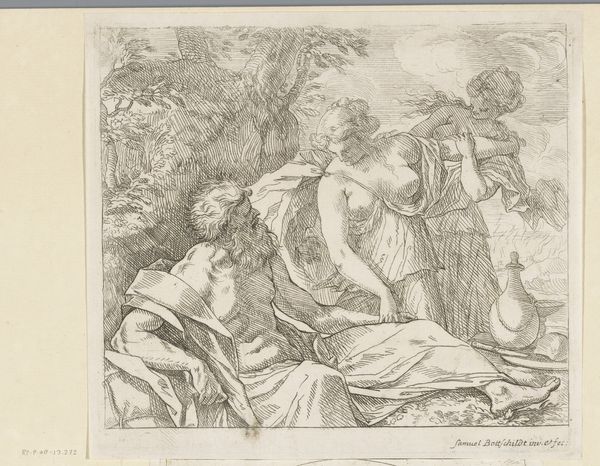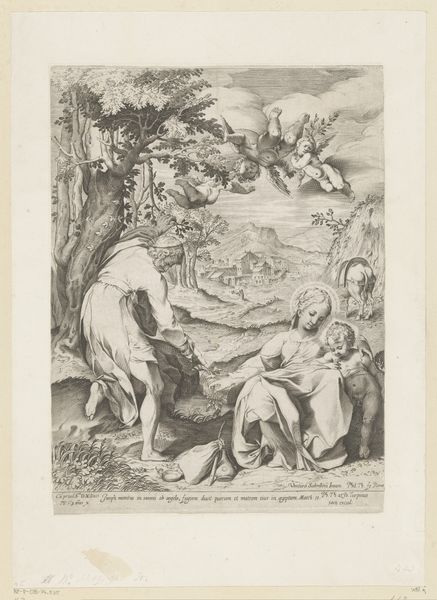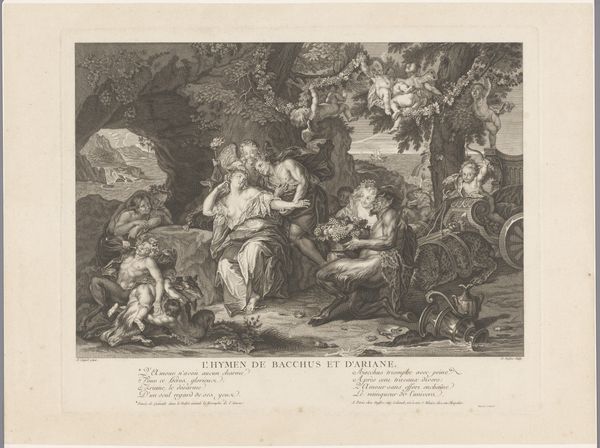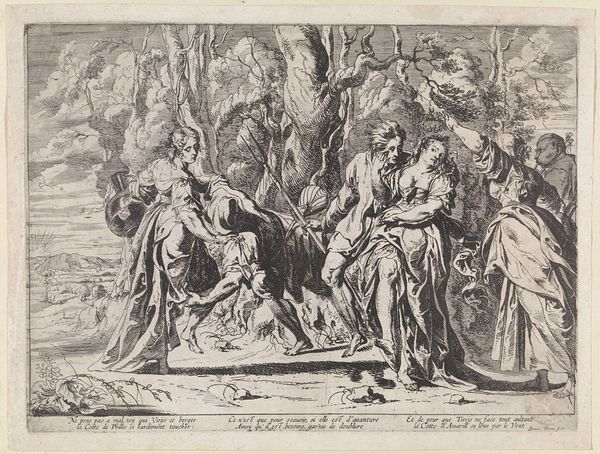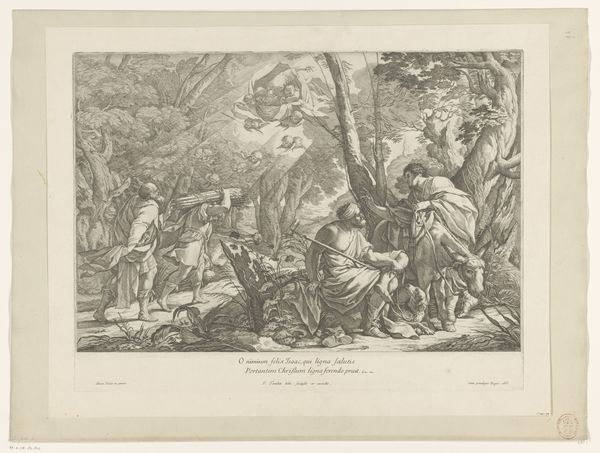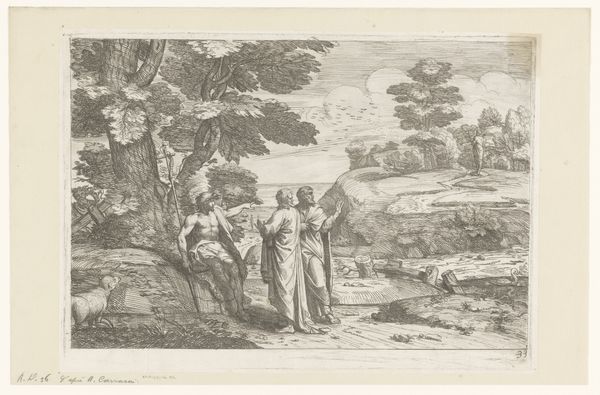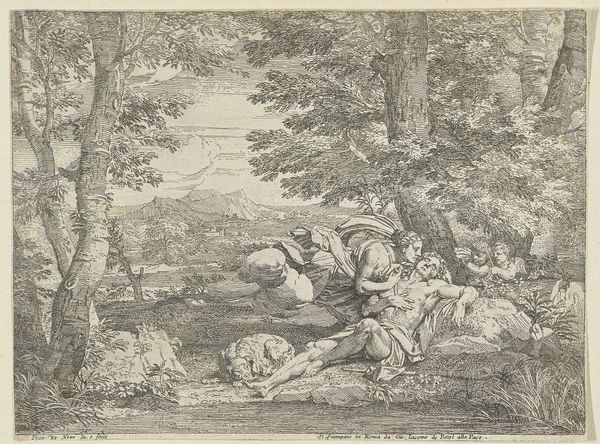
print, etching, engraving
#
baroque
# print
#
etching
#
old engraving style
#
landscape
#
waterfall
#
engraving
Dimensions: height 231 mm, width 332 mm
Copyright: Rijks Museum: Open Domain
Johannes Glauber made this print of a waterfall using etching, a technique popular in the Dutch Golden Age, between 1660 and 1726. Glauber presents a romanticized view of nature. You’ll notice the delicate lines and detailed textures, carefully composed to evoke a sense of awe and tranquility. But what is the public role of this imagery? The scene depicts a location in the French Alps, near the Grande Chartreuse monastery. The monastery itself, as a powerful religious institution, is notably absent from the image, though it is referenced in the latin text. The choice to focus on the natural landscape rather than the institution speaks to the growing interest in the natural world as a source of spiritual and aesthetic experience in the 17th and 18th centuries. Understanding this artwork fully requires considering the cultural and intellectual currents of its time. By consulting historical texts, travelogues, and studies of Dutch printmaking, we can gain deeper insights into its meaning and significance. Ultimately, the meaning of art is contingent on its social and institutional context.
Comments
No comments
Be the first to comment and join the conversation on the ultimate creative platform.
